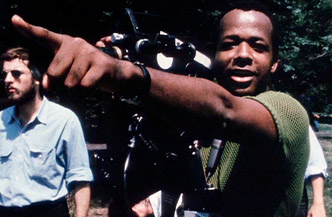|
|
Sole Criterion - Symbiopsychotaxiplasm: Two TakesBy Brett Ballard-BeachOctober 25, 2012
Thirty-five years later, Greaves pulled a chapter two (thanks in part to the collaboration of Steve Buscemi and yet another interested party’s funding, this time Steven Soderbergh) and revisited his experiment. I only watched it once and so these are simply some cursory thoughts. I liked it less in many ways than the first one (particularly in regards to the six reasons I listed above) but I also found it to be more emotionally honest and genuinely upsetting in key moments towards the end, as it plays viciously with art vs. life and acting vs. reality. Take 2 1/2 could have easily fit in Chapter Two as it also functions on the various tactics a director can employ in making a sequel. A few examples: #1: Give the audience more of the same. The first one-third of the 99-minute running time is made up of another “screen test” from 1968, with a different couple (a Caucasian male and an African-American woman) running the dialogue. After a brief interlude that captures the reaction of a crowd at a late ‘90s/early ‘00s screening of Take One and thoughts from the crew who are about to accompany Greaves on his latest venture… #2: Give the audience something new. The final 45 minutes plays mercilessly with whether the actors are in character or not, revisiting their 1968 roles, and grappling with an entirely new scenario, or playing something a little closer to their real lives. #3: Incorporate the passage of time. Shannon Baker and Audrey Henningham have aged, lived-in faces that contain great sorrow and weariness, yet also conceal smiles and warmth. The contrast of their young selves in the first half and their “now” in the second half is effective from a visceral point, but Greaves gives them a much stronger and realistically written scenario to act out, even as it reaches for maudlin notes. The actors’/characters’ anger undercuts any cheap sentiment. #4 Interact with your original. What I take away is Greaves’ serious attempt to comment on and expound upon his original experiment with the point of view that only three decades of distance can help provide. Like his new scenario, it’s a way of opening old wounds in order to help them better heal. If it seems a lot crueler than Take One, I would agree it is. Even he is taken aback by where the final dialogue between Freddie (Baker) and Alice (Henningham) leads but all three come through the other side together. Next time: Precursor to Pan’s Labyrinth? DVD Spine #351
|

|
|
|

|
Friday, November 1, 2024
© 2024 Box Office Prophets, a division of One Of Us, Inc.


